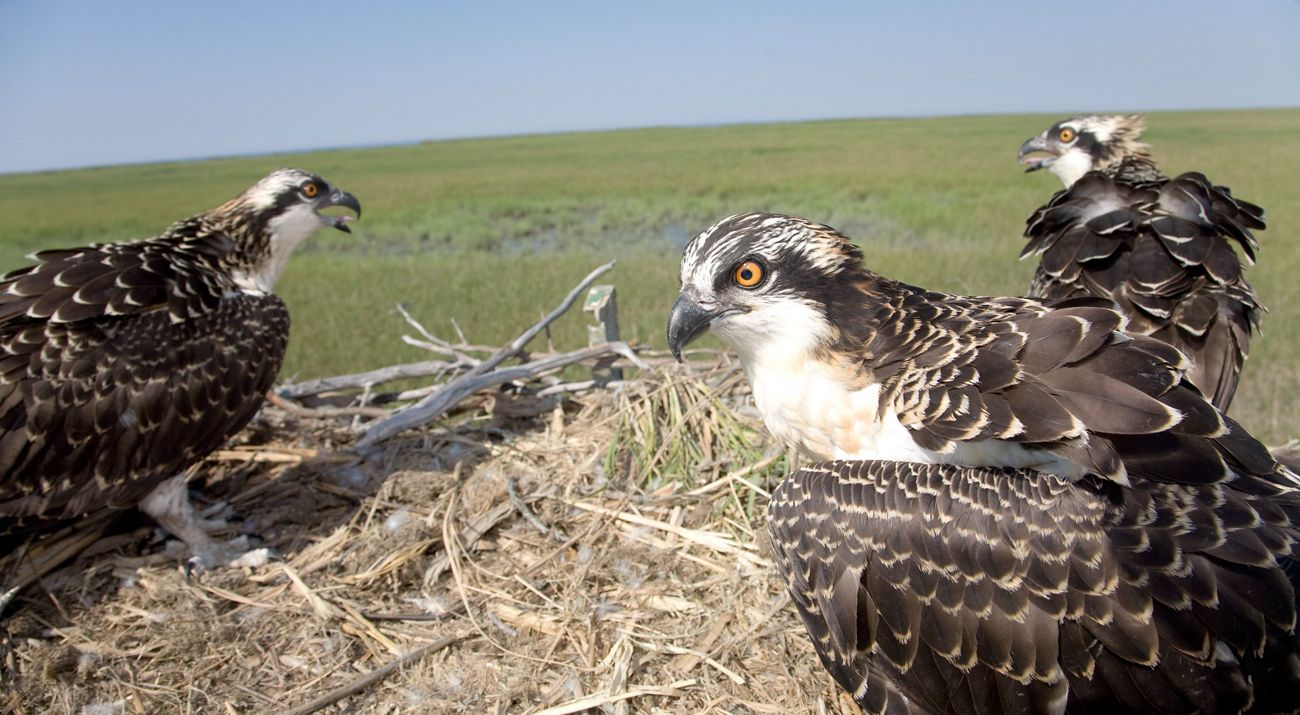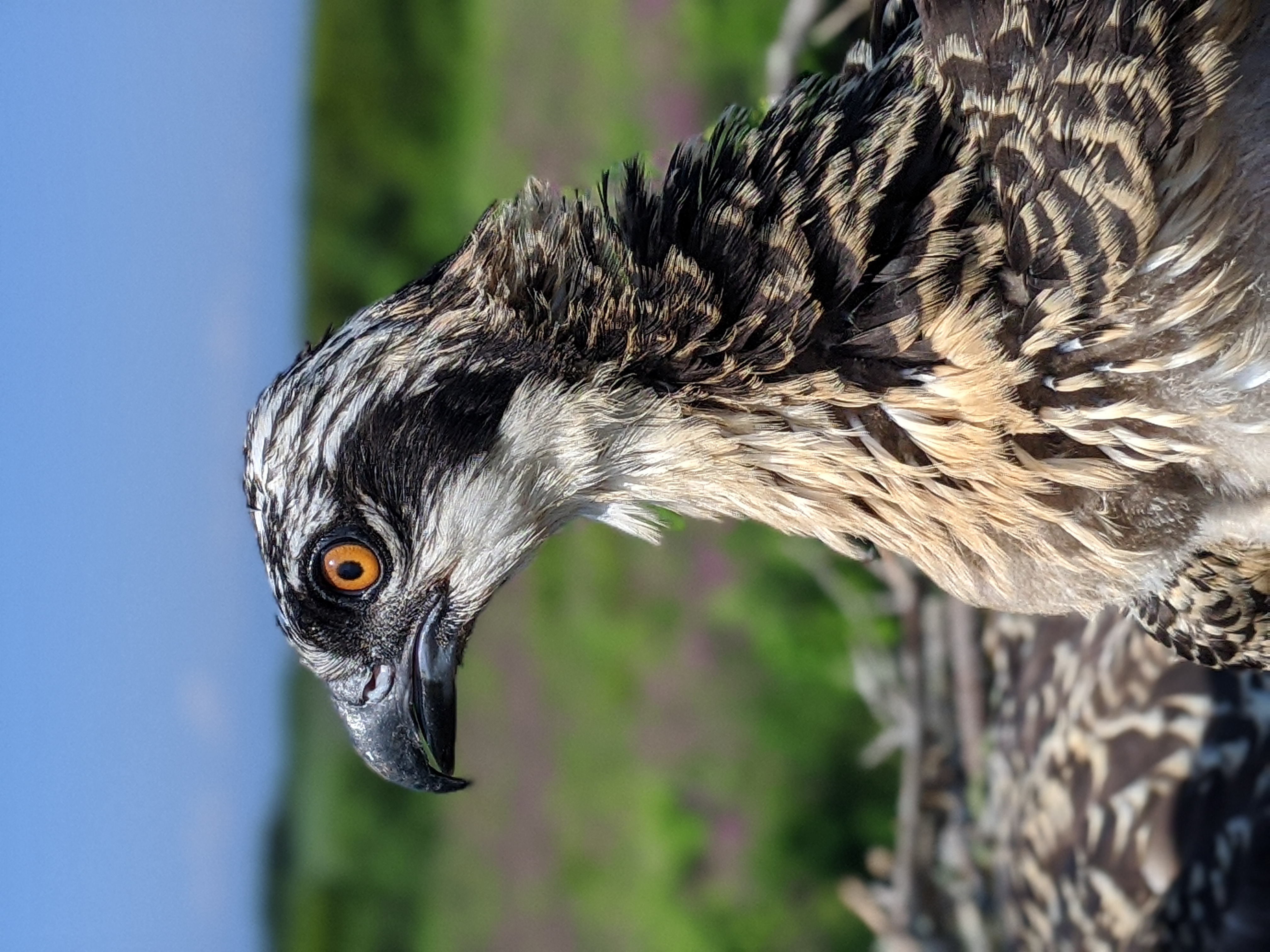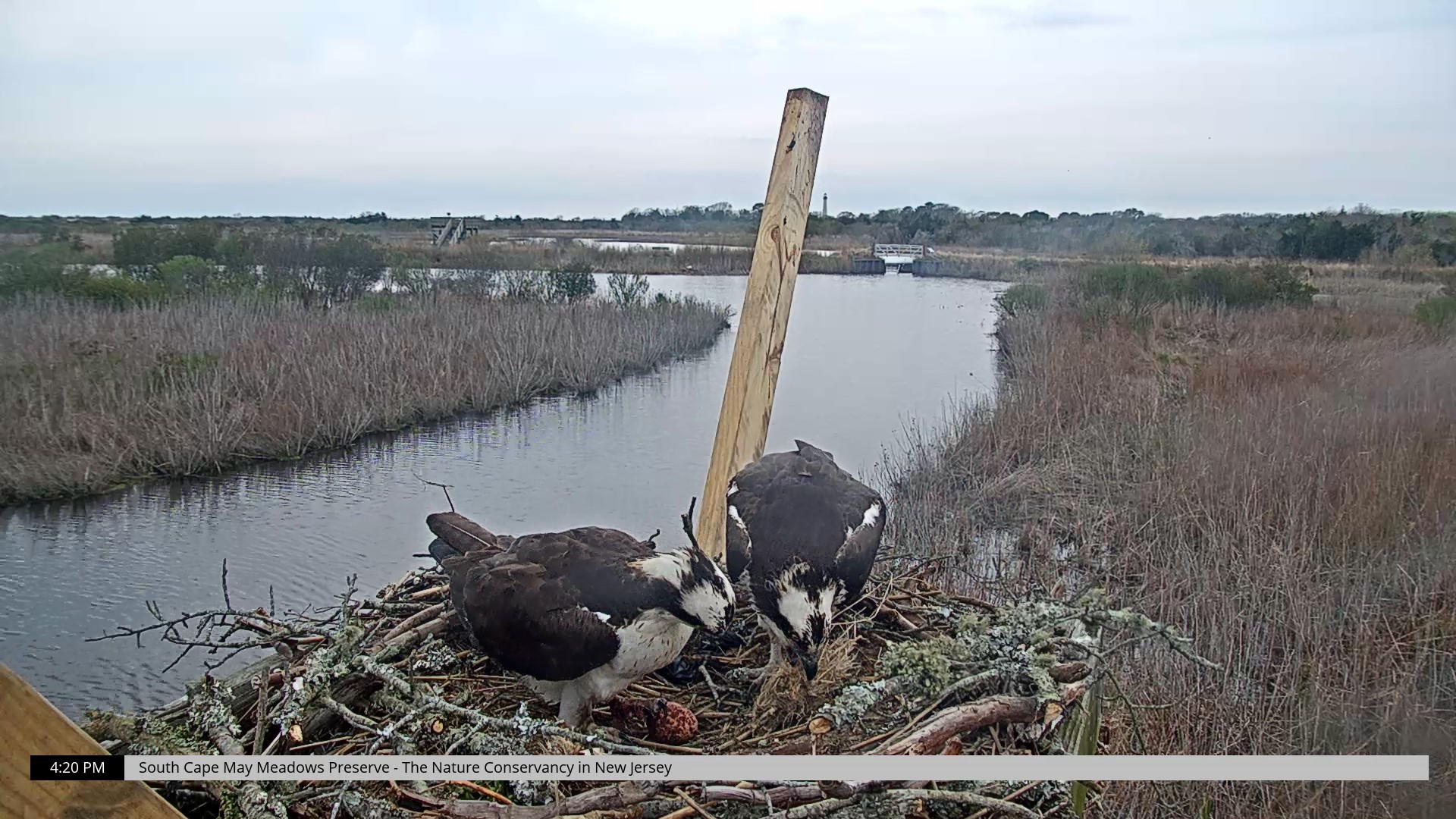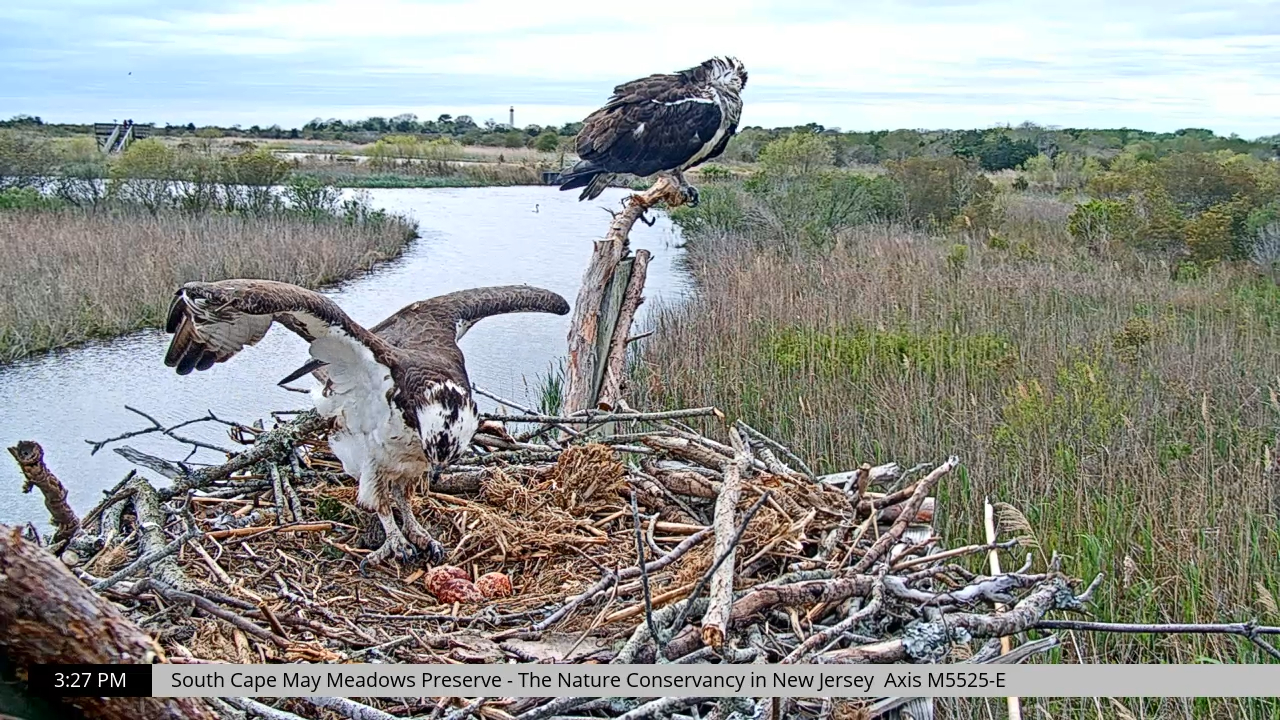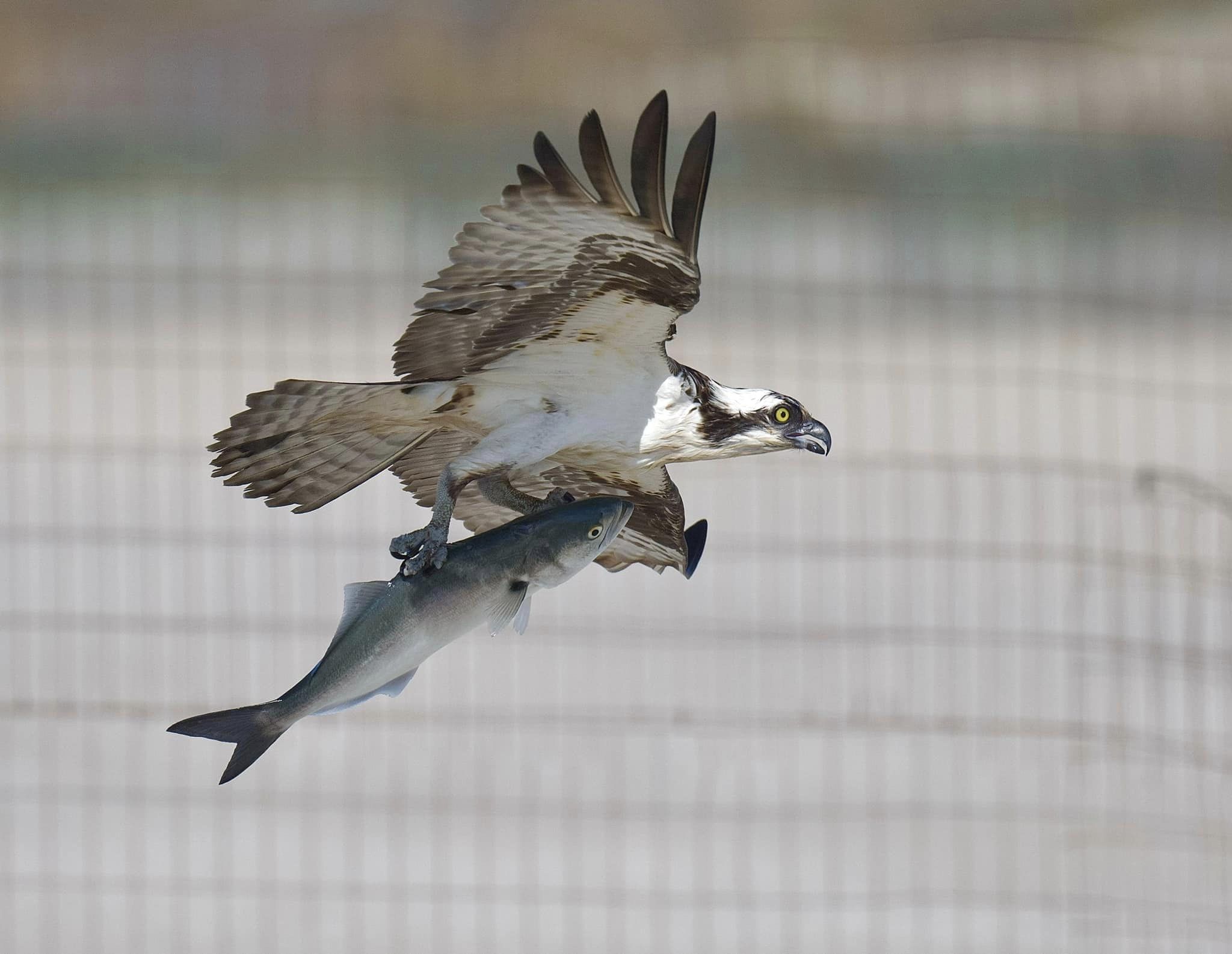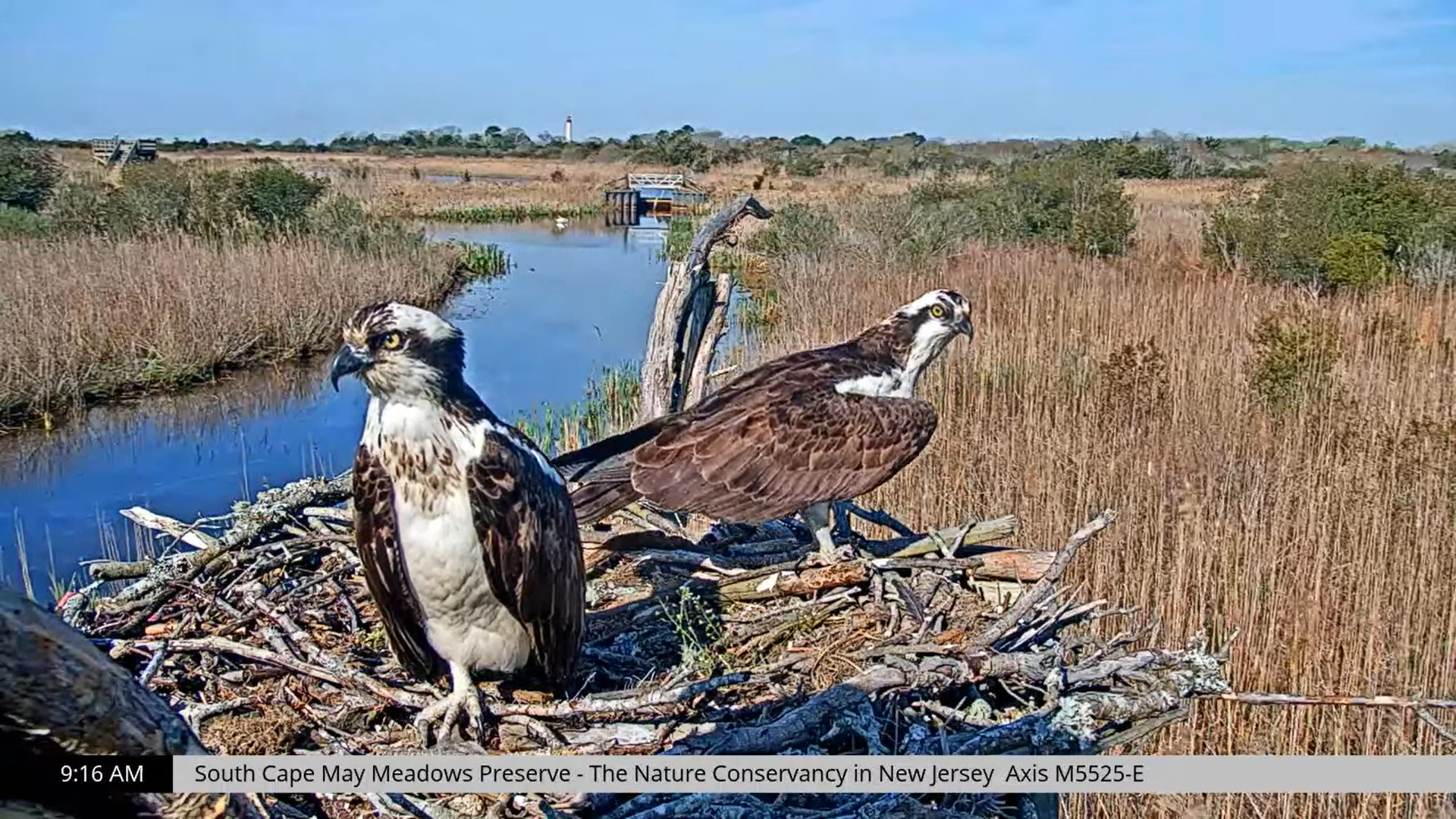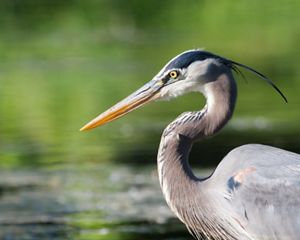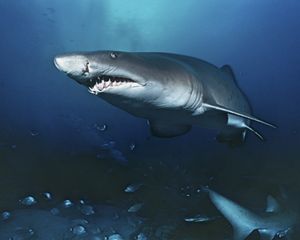Osprey: From Surviving to Thriving
In New Jersey, osprey are one of nature’s great comeback stories.
Key Takeaways
- The effects of the pesticide DDT decimated osprey populations. In New Jersey, the osprey was officially listed as endangered in 1974.
- DDT was banned and New Jersey conservation groups joined forces to erect nesting platforms in marshy habitats with clean water and healthy fish.
- For over 20 years TNC has been stewarding osprey habitat and maintaining nesting platforms, helping the species rebound.
- In 2025, ospreys were removed from New Jersey's list of endangered species.
Cape May Live Osprey Cam
Ospreys migrate south every fall and return to New Jersey's coast from early spring to late summer to nest and raise young. During nesting season, The Nature Conservancy live-streams from the platform at our South Cape May Meadows Preserve, giving viewers a true bird’s-eye view of the ospreys’ nesting and feeding activities. Adults, which mate for life, return to the same nest every year; juveniles spend about two years in South America before coming back to our shores. In 2017, birds banded in New Jersey, Maryland and Virginia were spotted in Aruba, Antilles and Venezuela. In 2023, 50 ospreys banded locally as nestlings were re-sighted during nest surveys.
Program Outcomes
During March, nesting ospreys return to the platform at our South Cape May Meadows Preserve. We live-stream the nesting process and keep records of the nest’s productivity.
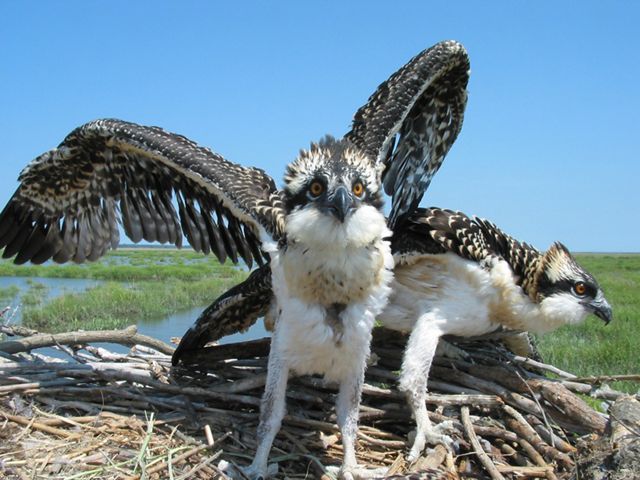
Nature's Great Comeback Story
One of the first signs of spring in New Jersey is the return of osprey in mid-March. Osprey pairs nest and raise their young along our coast from early spring to late summer before migrating back to South America.
Osprey, also known as fish hawks, were once abundant along the New Jersey coast, their six-foot wingspans easy to spot as they soared in the skies and dove to pluck fish from the water. But even with sharp talons and a reversible toe, osprey could not keep a foothold in the region when DDT pesticide came into use for insect control. A diet of DDT-laced fish stunted osprey reproduction, causing their eggshells to become thinner and decimating their numbers.By 1974, with fewer than 50 nests in the state, osprey landed firmly on the New Jersey endangered species list.
The use of DDT was banned, and osprey populations slowly started increasing. Conservation groups erected platforms to encourage nesting in marshy habitats where development replaced tree lines, and the osprey caught on—by the mid-1980s there were more than 200 healthy pairs nesting here.
There are now more than 800 platforms around the state, and it’s estimated that 75% of nesting osprey are using these man-made structures in New Jersey.

Stay connected for the latest news from nature.
Get global conservation stories, news and local opportunities near you. Check out a sample Nature News email.


Thanks to efforts by TNC and other conservation groups, the osprey population in New Jersey is going strong. In January of 2025, ospreys were officially removed from New Jersey's list of endangered species. This milestone represents a significant achievement in restoring osprey populations, managing their nesting sites and greatly enhancing the health of New Jersey's aquatic ecosystems.
The fierce-gazed raptors are happily proliferating, with the New Jersey Division of Fish and Wildlife and the Conserve Wildlife Foundation of New Jersey estimating 729 occupied nests in the state in 2024, with 35 new nests compared to 2023! A total of 867 young were produced from the 533 known-outcome nests throughout the state.
The conservation status for ospreys in New Jersey is stable, meaning they are no longer at risk of becoming threatened or endangered anytime soon. Our work to provide and steward habitat, and monitor the nests will continue to maintain stable population numbers.
Stewarding Osprey Habitat
Every year before nesting season, TNC repairs or replaces nearly 30 osprey platforms in southern New Jersey. These platforms provide nesting habitat for ospreys, making their availability and upkeep vital to osprey conservation.
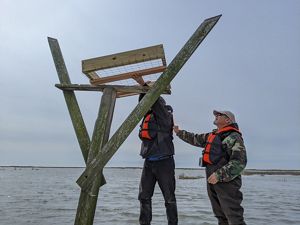
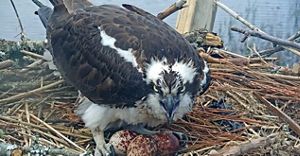
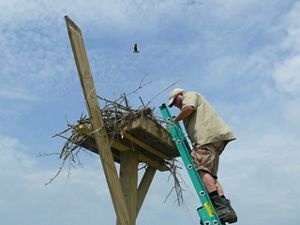
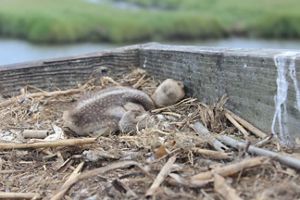

Osprey Platform Repairs: Every year before nesting season, TNC staff and volunteers make necessary repairs to nearly 30 osprey platforms in Southern New Jersey. © Lily Mullock/TNC

Mama Osprey: An osprey nesting on a platform protects her eggs. © TNC

Osprey Nest in New Jersey: TNC staff monitors an active osprey nest in New Jersey. © TNC

Osprey Hatchling: Osprey chicks hatch towards the end of May into early June. © Trisha Seelman/TNC
Healthy Lands, Healthy Osprey
Today, we know we must conserve and restore land at an unprecedented scale—for the benefit of people, wildlife and our climate. Ospreys remain a priority for TNC in New Jersey. For more than two decades we’ve been stewarding osprey habitat and maintaining and monitoring osprey nesting platforms in Cape May, Cumberland and Salem counties as part of PSEG’s Estuary Enhancement Program. Since 1994, that initiative has restored, enhanced and/or preserved more than 20,000 acres of salt marsh and adjacent lands to vital, healthy habitat for fish and wildlife.
TNC in New Jersey manages osprey platforms in more than 5,000 acres under the PSEG program, including nesting sites in Dennis Township and Commercial Township and within watersheds of the Maurice River, Cohansey River and Alloway Creek. TNC also protects critical osprey habitat at the Maurice River Bluffs. We have installed osprey platforms at three of our flagship preserves—South Cape May Meadows, Garrett Family Preserve at Cape Island Creek and Maurice River Bluffs—and share osprey data from these locations with the New Jersey Division of Fish and Wildlife Endangered and Nongame Species Program to be added into the overall count for the state.
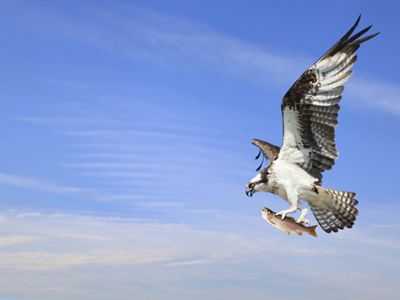
TNC Osprey Camera Kit
The South Cape May Meadows Osprey Kit is a fun and interactive way to engage remotely with wildlife and ecosystems. The kit includes activities that are both educational and entertaining. Engage your kids with nature by taking an osprey themed quiz, jotting down nest observations, or learning more about ospreys in New Jersey through the resources we've provided.
Videos and Additional Resources
Freshen up on your osprey knowledge by reviewing these resources.
- Osprey Fact Sheet to learn the basics about ospreys.
- TNC Osprey Webinar Recording to gain a deeper understanding of ospreys in New Jersey through this 35 minute webinar hosted by TNC.
- New Jersey Osprey Project to read more about the different conservation groups in New Jersey that are working collectively to manage and protect ospreys.
Activities
- Quiz for Kids to guide your child through our osprey fact sheet and test their knowledge with our online quiz. Also available as a printed version and answer key.
- Quiz for General Audience to read the fact sheet and additional resources we've provided, then see if you can ace this online osprey quiz. Also available as a printed version and answer key.
- Osprey Camera Field Notes to print out this worksheet so you can record your osprey nest observations, just like a real scientist!
- Scavenger Hunt to check off nest activities as you see them happen in real time with this fun scavenger hunt.
- Osprey Nest Tutorial to learn how to make your very own osprey nest with this fun craft tutorial video.
